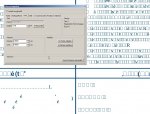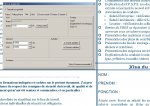Lukas Engqvist
Well-known member
Have been wrestling with some PDF files that have characters replaced by null character in Acrobat8 and earlier, and the RIP.
When placing PDF files in CS4 and then exporting to PDF, it appears that "custom" encoded fonts are re-encoding resulting in Null characters (Crossed out square, "[X]" ) replacing other characters.
This seems to be at random.
There is ofcourse no way to know if a custom encoding is correct or incorrectly encoded, but there is an inconsistency in how Acrobat 8 (and previous) and Acrobat 9 views fonts.
Most RIPs, due to the life cycle will render as Acrobat 8. Problematic PDFs can be exported to Postscript to generate printable results. But a Bug fix, or a backward compatibility patch is in order.
Exporting an erronous PDF as PDFX, or runniing preflight does not fix these issues. (reminds me a little of the Legacy Text issue we had in Illustrator a while back come to think of it)
What I am missing from the Acrobat is an option to re-encode fonts, especially subseted fonts.
This is what happens when we export to Postscript and redistill?
Using a joboption with PDFx4 was able to circumvent the problem… but it is impossible for us to tell how many levels of placed PDFs and what settings are used in each stage, on a PrintReady PDF.
Is this an issue Adobe is Aware of? Will there be a patch?
This is a somewhat urgent appeal to Adobe as it will greatly affect the confidence service providers have in CS4 uppgrade.
When placing PDF files in CS4 and then exporting to PDF, it appears that "custom" encoded fonts are re-encoding resulting in Null characters (Crossed out square, "[X]" ) replacing other characters.
This seems to be at random.
There is ofcourse no way to know if a custom encoding is correct or incorrectly encoded, but there is an inconsistency in how Acrobat 8 (and previous) and Acrobat 9 views fonts.
Most RIPs, due to the life cycle will render as Acrobat 8. Problematic PDFs can be exported to Postscript to generate printable results. But a Bug fix, or a backward compatibility patch is in order.
Exporting an erronous PDF as PDFX, or runniing preflight does not fix these issues. (reminds me a little of the Legacy Text issue we had in Illustrator a while back come to think of it)
What I am missing from the Acrobat is an option to re-encode fonts, especially subseted fonts.
This is what happens when we export to Postscript and redistill?
Using a joboption with PDFx4 was able to circumvent the problem… but it is impossible for us to tell how many levels of placed PDFs and what settings are used in each stage, on a PrintReady PDF.
Is this an issue Adobe is Aware of? Will there be a patch?
This is a somewhat urgent appeal to Adobe as it will greatly affect the confidence service providers have in CS4 uppgrade.















